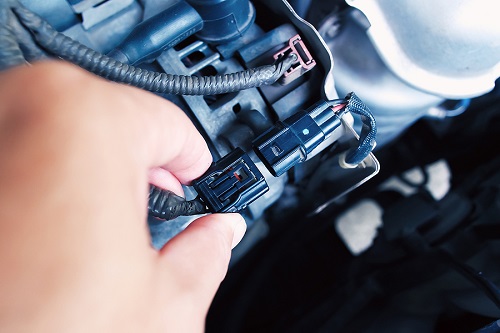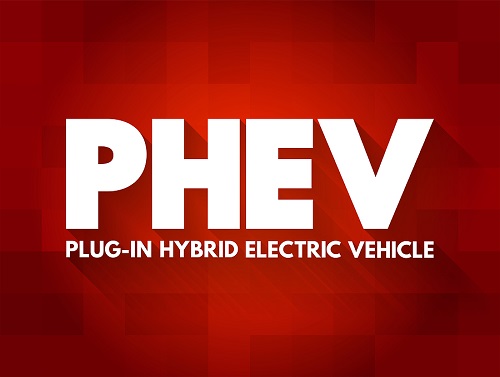Hybrid-engined cars have hit the heights of the car sales charts in recent years, but what exactly is a hybrid?
Basically, a hybrid is a car that mixes both petrol (or, more rarely, diesel) power with electric power. The general idea is that the electric part gives you a certain amount of zero-emissions running power and saves on fuel and emissions. As ever, though, it’s not quite that simple and there is more than one type of hybrid. Let’s take a look and see which one is which…
Mild hybrid

A mild hybrid is the simplest form of hybrid, and is really more of a beefed-up electrical system for a conventional petrol or diesel car. In a mild-hybrid, the alternator — the bit of the engine that supplies electrical power to systems like heating, and which keeps the starter battery topped up — is replaced by a starter/generator. Effectively, this is a compact electric motor and it’s powered by a small rechargeable battery. The starter/generator is more powerful than an alternator, and so it allows a mild hybrid to use its stop-start system for longer when you’re sitting in traffic, and it can also allow the car to coast, briefly, with its engine off or at tickover, when driving on main roads. It can also power the car’s electric components, taking some of the strain off the engine, which helps to save on fuel. Some — such as those used by Mercedes — can also add an extra burst of torque to the engine when accelerating hard, such as when overtaking another car. What it won’t do is allow the car to run on just electric power — a mild hybrid is there to help the combustion engine, not to partially replace it.
Popular mild hybrid models: Ford Puma, Volkswagen Golf eTSI
Is a mild-hybrid right for me? If you want a simple solution, with no plugs nor change in driving style, but still want to save a little fuel, then yes.
Full, or parallel hybrid

This is the type of hybrid that is most popular right now, and if you’re looking for an easy example of a full hybrid, think of a Toyota Prius. Indeed, it was the Prius that popularised the hybrid engine in the first place, starting way back in 1997 (it wasn’t quite the first hybrid on sale, that was the two-seat Honda Insight, but the Prius became more popular). Toyota, and some other car makers, usually refer to this type of hybrid as a ‘self-charging’ hybrid, but actually the technical term is parallel hybrid. That’s because its petrol engine works in parallel with its electric motor. The extra torque and power provided by the electric motor essentially allows the petrol engine to be less powerful and tuned more for economy. Toyota uses the ‘Atkinson Cycle’ for its hybrid petrol engines, which plays with how long the engine’s valves open and shut for, making for better fuel consumption but less power. Parallel hybrids have a compact battery which charges both from running the engine and from brake energy recovery, and this allows them to run, for brief bursts, on electric power alone. They won’t do so for long distances — in general, a parallel hybrid will have exhausted its battery after a kilometer or two — but because the battery is small and recharges so quickly, they can do it again and again, especially on urban journeys where you’re doing lots of braking. Indeed, Toyota claims that around town, its parallel hybrids can run on electric power, engine off, for as much as 80 per cent of their journeys.
Popular parallel hybrid models: Toyota Corolla, Hyundai Tucson
Is a full hybrid right for me? Almost certainly, yes — you get an amount of electric driving but without the fuss of cables and charging.
Series hybrid
A series hybrid is a different type of full hybrid, but one that is comparatively rare on the roads at the moment. In a series hybrid, the car is always and only driven by its electric motor, and its petrol engine is there simply to act as a generator to top up the compact battery and keep the car going. So far, not too many car makers have put series hybrids on sale, but recently there has been a revival in interest in the technology. Nissan has just launched two new ‘e-Power’ series hybrid versions of the popular Qashqai and X-Trail, and Mazda is about to launch a series hybrid version of the compact MX-30 crossover, which uses a tiny rotary engine to keep the battery topped up. Actually, technically the MX-30 counts as a ‘range-extender’ hybrid as its battery can be charged up from the mains to give it some useful all-electric range without waking up the engine, which brings us nicely on to plug-in hybrids…
Popular series hybrid models: Nissan Qashqai e-Power, Mazda MX-30 REV
Is a series hybrid right for me? Possibly so — the jury is still somewhat out on how good their long-range fuel economy is.
Plug-in hybrids

The plug-in hybrid electric vehicle, or PHEV, is probably the most popular form of hybrid car right now, with most car makers offering at least one — and in some cases many — PHEVs in their lineups. Essentially, a PHEV takes the basic concept of a parallel hybrid, and adds a bigger battery and a plug socket. This allows you to charge the battery up from mains electricity, which then gives you the ability to drive for longer distances on just electric power. In theory, and as long as you (a) have a driveway on which to charge up, and (b) drive mostly short commuter hops, this gives you a car that effectively acts as an electric car almost all the time, but which still has a conventional petrol or diesel engine and a fuel tank for when you want to head off on a longer journey. PHEVs have become hugely popular, especially with company car users, as they tend to have very impressive official CO2 emissions figures, making them very tax-efficient. However, there is more than a little controversy around PHEVs, as critics say that they’re too inefficient on longer runs and that people buy them for the tax benefits and then don’t bother to charge them up and use their electric driving capabilities. In truth, PHEV performance varies hugely from model to model, with some offering long-range fuel economy that’s comparable with the best diesel cars, while others become incredibly thirsty when taken on longer journeys as they’re essentially hauling around dead weight in the form of a flat battery. Car makers argue that PHEVs are a useful stepping stone to fully-electric motoring for many drivers, and that they are a better option at a time when the public charging network for electric cars is still quite sparse and unreliable. It’s a debate — often a heated one — which will likely run for some time.
Popular plug-in hybrid models: BMW 330e, Kia Niro PHEV
Is a plug-in hybrid right for me? If you have the right driving pattern (lots of short hops) and are diligent about charging, then possibly yes.
So there you have it, a run down that answers the not-so-simple question of 'what is a hybrid car?'. If you're interested in learning more, why not read our post on charging an electric car.